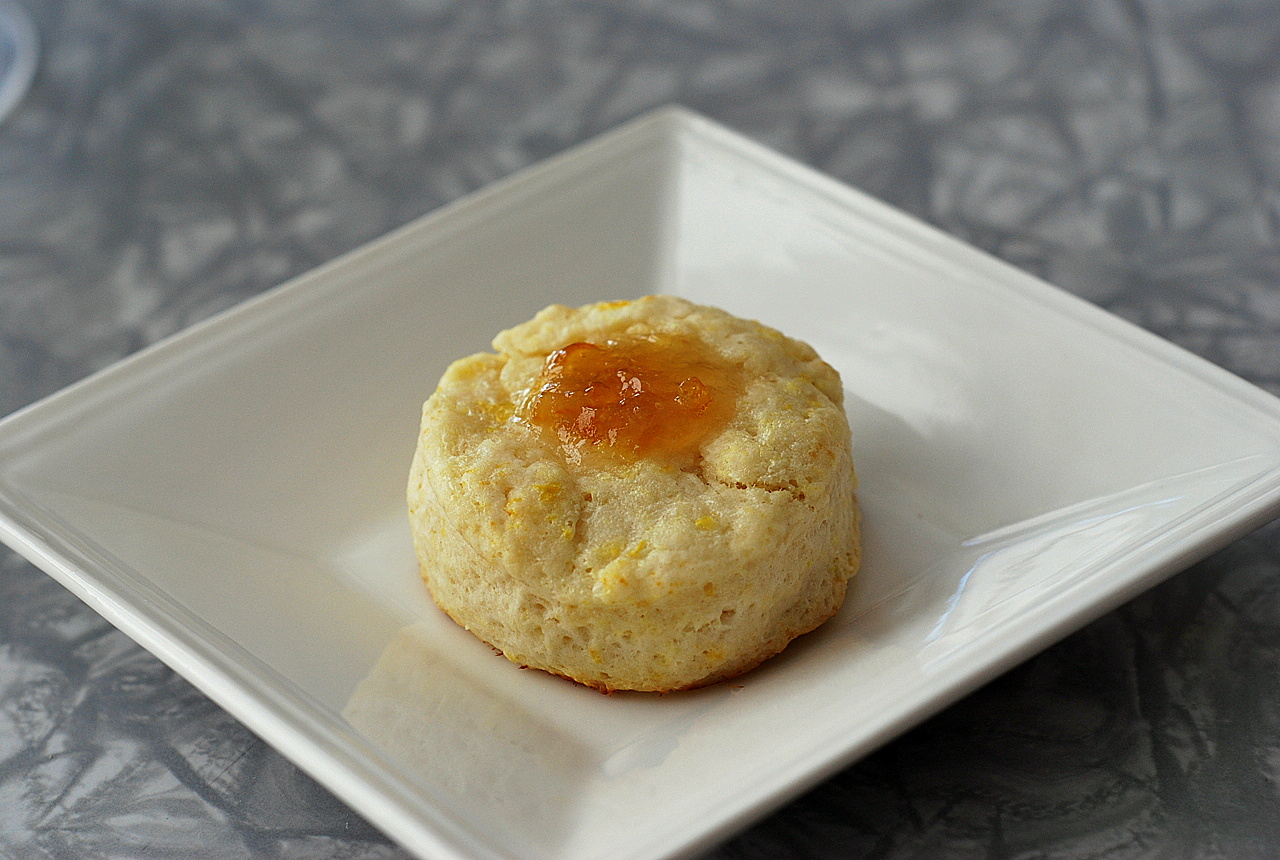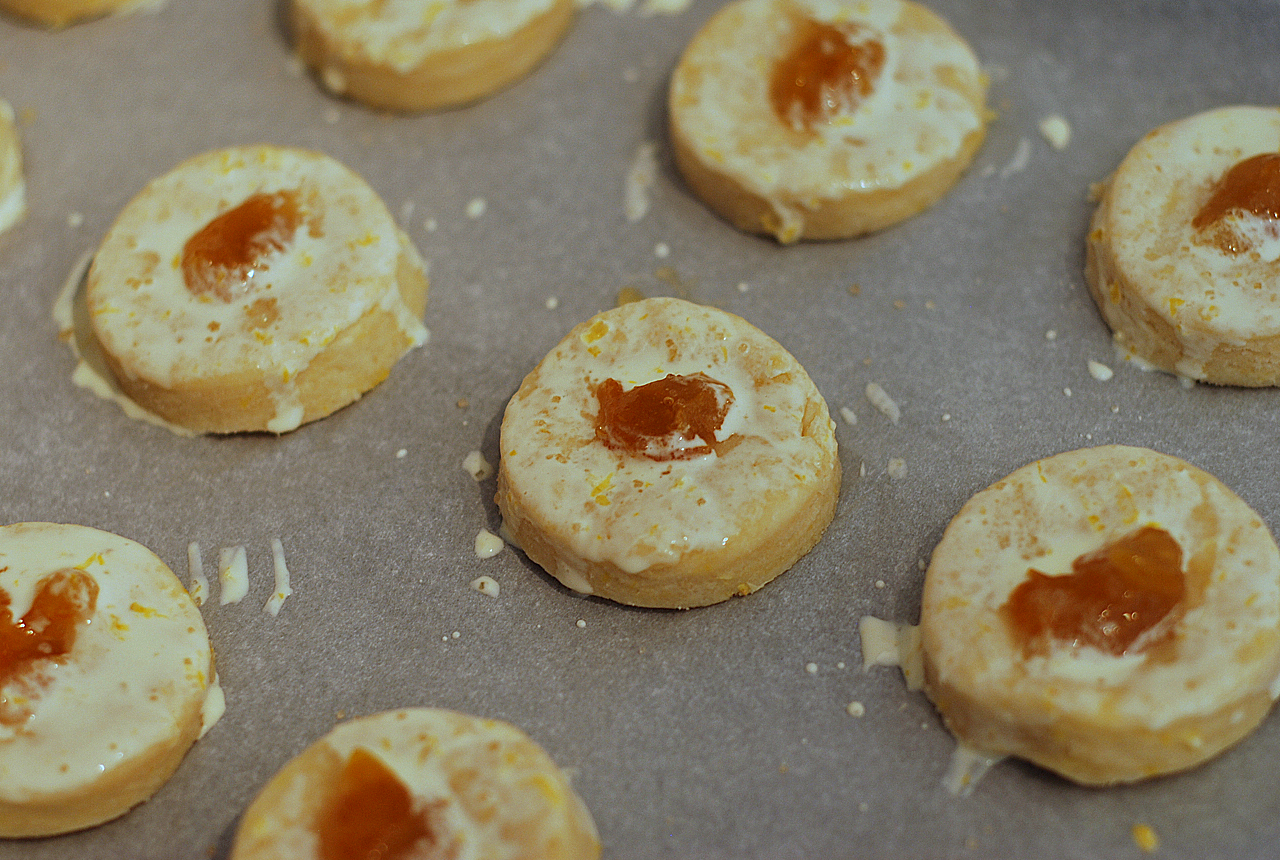If you’re not old enough to remember Hanratty’s in Edmonton, then you’re not old enough to remember Edmonton’s golden age of proper English scones. The lovely lunch spot on Whyte Avenue died in the early 1990s (to then become Sherlock Holmes and now I think some generic Whyte bar) and with it, the delicious tradition of scones with clotted cream — what I had since in Edmonton was always cut with a large amount of whipping cream. If you’ve never had Devonshire cream, seek it out. And don’t share.
The scone though, has always remained, and bakeries and coffee shops in all directions offer many varieties. Usually too large, too sweet and too iced to be considered a proper English scone worthy of high tea. A scone is more biscuit than pastry. And thus, a perfect vehicle for post-baked sins in the form of clotted cream and jam or butter. I understand that biscuits can seem boring on their own. Without a tea party, traditional scones may be lacking in excitement. Enter the lemon.
Bon Appetit recently published a recipe for lemon thumbprint scones with raspberry jam, and Mark Bittman recently published a recipe in the New York Times for classic scones. I married the two and added my own touch: substituting lemon marmalade for the raspberry preserves to end up with a Triple Lemon Thumbprint Scone. The triple being a lemon scone with a lemon wash with a lemon thumbprint. “A modern twist on a classic” I’d say if I was trying to sell it to you. “Please pass the butter,” if you were over for tea.
Triple Lemon Thumbprint Scones
adapted from Bon Appetit and Mark Bittman
Makes about 8 regular or 16 mini scones.
2 cups all-purpose flour, more as needed
0.5 teaspoon salt
2 teaspoons baking powder
2 tablespoons sugar, more for sprinkling
5 tablespoons cold butter, cut into pieces
1 egg
0.75 cup heavy cream, more for brushing
2-3 lemons
lemon marmalade, around 0.5 cup or less (depending on size of your thumb, of course)
Heat your oven to 450 degrees. Prepare baking sheet with parchment paper
Zest lemons until you have 6 teaspoons worth.
Sift flour, salt, baking powder and sugar and then mix with hands to combine. Add 4 teaspoons of zest. Add the butter and mix with hands, pastry blender or in food processor until coarse crumbs form.
Add the egg and cream to form a slightly sticky dough. If it’s too sticky, add a little flour, but very little; it should still stick a little to your hands.
Turn the dough onto a lightly floured surface and knead once or twice. Press it into a 0.75-inch-thick circle and cut into rounds (large or mini). Put the rounds on baking sheet. Gently reshape the leftover dough and cut again.
Make an indentation in the middle of each scone with your thumb and then place about 1 teaspoon of marmalade into depression. Whisk about two tablespoons of cream with remaining two teaspoons of zest. Brush the top of each scone with a bit of the cream mixture and sprinkle with a little sugar.
Bake for 9 to 11 minutes until golden, about 7 or 8 for minis. Because it all comes down to the size, watch carefully rather than go by these times.




12 comments
gretchen says:
Oct 24, 2010
oh I loved having tea and scones at Hanratty’s…I am sure your scones rivaled or exceeded those yummy, buttery treats…thanks for the trip down memory lane and great new recipe!
cream says:
Oct 25, 2010
Thank you for reading.
kelly o says:
Oct 26, 2010
They look amazing. I’d forgotten about Hanratty’s!! I was one of those spoiled liberal Strathcona kids, my Mom always took me there.
cream says:
Oct 26, 2010
Kelly – I always went with Aimee and Susan!
Anya says:
Oct 26, 2010
I was in Russia, so no proper English scones at Hanratty’s for me.
But if I come over right now could I have some please?
They look deeeelicious!
kristin @ delishliving says:
Nov 2, 2010
Just discovered your beautiful blog through Val at Canadian Foodie – It’s wonderful! Gorgeous pictures, and these scones look to die for. So happy to have found a fellow Edmontonion foodie 🙂
cream says:
Nov 2, 2010
Thank you!
We appreciate your comments. Only one of us is in Edmonton now (Sugar), as I’m in Vancouver (Cream). Edmonton will always be in me though!
Carmine Hyatte says:
May 4, 2011
I wanted to send you a bit of word to finally thank you very much over again just for the awesome ideas you’ve shared in this case. It has been certainly incredibly generous of people like you to deliver without restraint what numerous people would’ve made available as an e-book to help with making some cash on their own, and in particular now that you could have tried it if you ever decided. These things additionally worked as the great way to realize that other individuals have similar interest the same as my very own to realize a little more in respect of this issue. I believe there are some more pleasant periods ahead for people who see your site.
cream says:
May 4, 2011
Thank you for your comment.
Kristen says:
Dec 21, 2011
My parents owned Hanratty’s, they will be thrilled to see this post.
cream says:
Dec 21, 2011
That is awesome that you found us, Kristen! Tell your parents that my introduction to Devonshire cream at their establishment is a memory I’ll never forget.
Laurie says:
Mar 3, 2015
My Mom passed away at the age of 92 on February 14/2015.
One thing she always remembered are the times we went to Hanratty’s on Whyte. Thanks for making a happy memory for Mom.